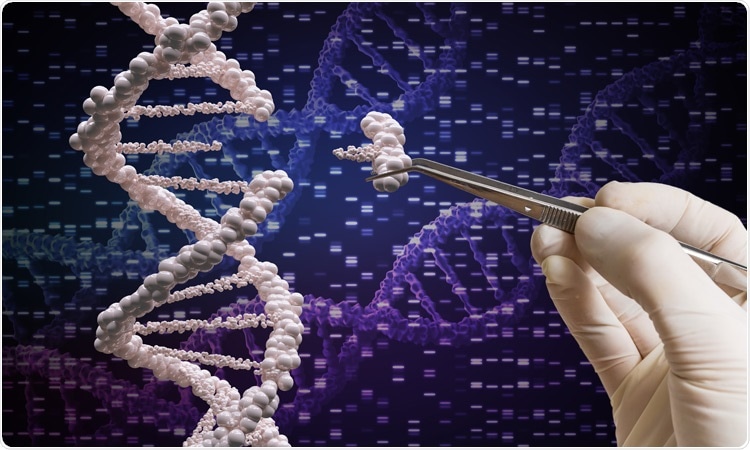Comprehensive research carried out by scientists from the Sanford Burnham Prebys, the National Cancer Institute (NCI), and other groups revealed that gene editing, particularly gene knockout (KO), with CRISPR-Cas9 can support cells with mutated gene forms associated with cancer.

Image Credit: Sanford Burnham Prebys.
The observations emphasize the necessity to monitor patients undergoing CRISPR-Cas9-based gene therapy for cancer-related mutations. The research was published in the Nature Communications journal.
Our study shows that in many different cell types, CRISPR gene-editing can confer a selective advantage to cells harboring mutations in genes associated with cancer, such as p53 and KRAS. We have shown that when CRISPR-Cas9 is used to edit the genome, cells with cancer-associated mutations are likely to be selected to survive—and this is more widespread than scientists previously understood.”
Ani Deshpande, PhD, Study Co-Senior Author and Assistant Professor, NCI-Designated Cancer Center, Sanford Burnham Prebys
CRISPR-Cas9 creates double-stranded DNA breaks at certain points in a DNA sequence, enabling investigators to identify and edit specific genes. But the p53 gene responds to double-stranded breaks by stopping cell growth. In other words, cells undergoing CRISPR will grow and divide less effectively. This indicates that cells with mutations in the p53 gene continue to grow and divide normally, providing them a competitive advantage.
The p53 gene halts cell division identifying a genomic error and tries to rectify the problem. In case the genomic error cannot be rectified, p53 initiates programmed cell death before the cells become cancerous. This makes p53 a significant anti-cancer gene and its function loss makes individuals more susceptible to tumors.
Deshpande adds, “The p53 gene is so important that it’s nicknamed the ‘guardian of the genome.’”
Computational biologists headed by Eytan Ruppin, PhD, chief of the Cancer Data Science Laboratory at the NCI Center for Cancer Research and co-leader of the study, examined p53 responses to double-stranded breaks in around 1,000 human cell lines.
The researchers identified that in almost every cell type, after CRISPR-Cas9 KO, cells with normal p53 genes showed slower growth. However, cells with mutated p53 genes were less affected, enabling them to grow quickly and outcompete the normal cells. They also identified that CRISPR might confer an advantage to cells with other cancer-linked mutations, similar to the KRAS oncogene.
This is not the first time researchers have shown CRISPR may introduce potentially dangerous changes. However, it is the first time these effects have been demonstrated in so many diverse cells.”
Eytan Ruppin, Chief, Cancer Data Science Laboratory, NCI Center for Cancer Research
The observations indicate the need for caution in using CRISPR-based gene therapies, specifically while treating people with underlying mutations in p53 or KRAS genes.
There are CRISPR therapies being developed to correct mutations in many human tissues, but as others have noted before, we need to proceed with caution, because we may be selecting for cells that carry mutations in key cancer driver genes when using CRISPR-Cas9 editing, and that could be potentially dangerous.”
Eytan Ruppin, Chief, Cancer Data Science Laboratory, NCI Center for Cancer Research
Ruppin further states, “However, fortunately, and importantly, additional new CRISPR editing techniques that have been recently developed are much less likely to carry this risk, if at all.”
Deshpande remarks, “Early CRISPR techniques generated double-stranded breaks, but more modern iterations make simpler edits to target DNA. If we use a non-cutting version of CRISPR we are likely to avoid many of these problems, which could be very good news for patients.”
In spite of the potential risks, the researchers consider that CRISPR remains an exhilarating and revolutionary approach and that issues similar to this are not insuperable. Both the senior authors point out that promising medical technologies should overcome obstacles before they are harmless to be used in patients.
Source:
Journal reference:
Sinha, S., et al. (2021) A systematic genome-wide mapping of oncogenic mutation selection during CRISPR-Cas9 genome editing. Nature Communications. doi.org/10.1038/s41467-021-26788-6.